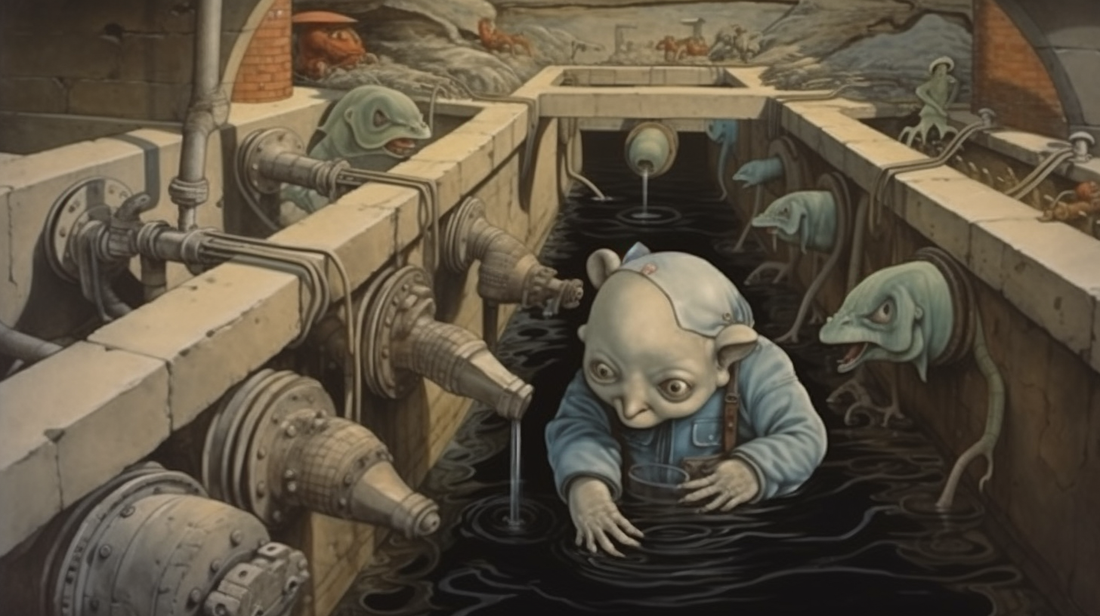
The Science Behind Plumbing How Does it All Work?
Plumbing, at its core, is a practical application of several scientific principles.
From the flow of water to the removal of waste, understanding the science behind plumbing can provide a deeper appreciation for this essential system in our homes and buildings. Let's delve into the fundamental scientific concepts that make modern plumbing possible.
1. Gravity
- Role in Plumbing: Gravity is the primary force used to move water and waste through drains and sewage systems. It ensures that water flows from higher to lower elevations.
-
Application: Sewer lines are sloped downward to facilitate the gravitational flow of wastewater away from homes to treatment facilities.

2. Pressure
- Role in Plumbing: Water pressure is essential for delivering water to various parts of a building.
- Application: Water towers store water at elevated heights, using gravity to create water pressure in the distribution system. In homes, water pumps can be used to increase pressure, ensuring water reaches upper floors.
3. Siphoning
- Role in Plumbing: Siphoning prevents sewer gases from entering homes and buildings.
- Application: The U-shaped bend in the drainpipe under sinks, known as the P-trap, contains water that acts as a barrier to block sewer gases. Similarly, toilets use siphoning action to flush waste, with the water in the bowl serving as a seal against gases.
4. Venting
- Role in Plumbing: Venting equalizes air pressure within the drainage system, allowing water to flow freely.
- Application: Plumbing vents, typically seen as pipes protruding from roofs, allow air to enter the plumbing system, preventing vacuums from forming and ensuring smooth drainage.
5. Capillary Action
- Role in Plumbing: Capillary action can unintentionally draw water in unwanted directions, potentially causing leaks.
-
Application: Plumbers must be aware of capillary action when soldering pipes to ensure that residual water doesn't get drawn into joints, which can prevent proper sealing.

6. Thermal Expansion
- Role in Plumbing: As water heats up, it expands. Plumbing systems must accommodate this expansion to prevent damage.
- Application: Modern water heaters often have expansion tanks that provide space for hot water to expand without increasing pressure in the system.
7. Fluid Dynamics
- Role in Plumbing: Fluid dynamics studies the motion of fluids, including water. It's crucial for designing systems that efficiently transport water.
- Application: The size and shape of pipes, valves, and fixtures are designed considering fluid dynamics to ensure optimal flow rates and minimize issues like water hammer (a loud thudding noise in pipes).
Conclusion
The science behind plumbing is a blend of physics, engineering, and practical know-how. While the principles may seem basic, their application in creating efficient, safe, and reliable plumbing systems is a testament to human ingenuity. The next time you turn on a faucet or flush a toilet, remember the intricate dance of scientific principles at play, making our daily conveniences possible.
Business Name: Tony's Drain & Sewer Cleaning
Address:4100 IL-71 d, Oswego, IL 60543
Phone: (630) 596-7712
Emergency Service: (630) 596-7712
Business Email: tony@tonysdrain.com
Business Website: https://www.tonysdrain.com
The Science Behind Plumbing How Does it All Work? by Tony's Drain and Sewer Cleaning
